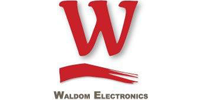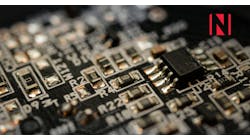Counterfeit electronics continue to dominate the electronics industry. In 1995, the organization, ERAI, was established to help the industry identify problematic customers and suppliers. Mark Snider, the president of ERAI, visited China on three different occasions to take a first-hand look at its flourishing counterfeit industry.
In the past, the electronics industry used several simple techniques to detect counterfeit electronic components. Counterfeits used to contain very basic inconsistencies. Most of these were visible to the human eye.
-
Spelling mistakes. For example, the manufacturer name was misspelled.
-
Imperfections. This includes cracks, dents, and other bruises on the chip.
-
Sloppy production. The print on the part was slanted, faded, or hard to read. The overall quality seemed questionable.
A full list of these visual imperfections is available through a Slideshare presentation by ERAI.
Today, it is much harder to detect counterfeits.
Counterfeit electronics are a lucrative business.
A part that is reproduced for just pennies can be sold for hundreds - if not thousands - of dollars. Many counterfeiters have invested in more sophisticated techniques to produce the copies. Often times, the counterfeit electronic component and the authentic part are identical in appearance. As counterfeiters become more sophisticated, both manufacturers and suppliers will need to rely on advanced techniques to detect irregularities.
Recently, the Defense Advanced Research Projects Agency (DARPA) made headlines for developing a revolutionary technique. One of DARPA's contractors built an Advanced Scanning Microscope. The microscope uses a narrow infrared laser to examine the electronic chip and gain more information about the chip construction and the function of the circuit at the transistor level.
Snider offered his thoughts on the development. "I think the real challenge here will be to wait and see how effective the microscope works with more complex devices, like a modern FPGA. Microscopes are great tools everyone should be using. Unfortunately, if you have a lot of parts, the technique is not very practical as it is very time consuming."
In addition to microscopy, there are several other techniques that can be used to examine a chip:
2) X-ray
X-ray can be used to inspect the die. This determines if a die is in place, if the die are of inconsistent sizes, and if there are any broken or missing wire bonds.
3) Resistance to solvent testing
A common technique is to use acetone to determine if the chip's markings are genuine. The approach is simple, effective, and cheap.
4) Heated chemical testing
A more abrasive technique is to use Dynasolve or Uresolve to strip off the surface. This approach is time consuming, but it can be used to detect sanding marks or ghost markings.
DARPA has taken other steps to detect counterfeit electronics. In March 2014, DARPA introduced the program Supply Chain Hardware Integrity for Electronics Defense (SHIELD). The program proposes using a small component (or dielet) to verify the origin of the electronic component. The dielet will contain a full encryption engine, sensors to detect tampering, and if the chip is tampered with, an automated mechanism to initiate self-destruction. The dielet will be designed so that it affixes to any electronic component available in today's market. A handheld device will be used to scan the component and verify its serial number.
Snider feels that this approach may be too ambitious. "It's a commendable project, but with the budget that DARPA has in mind, it may not be very realistic. In short the dielet would need to be extremely low cost with minimal impact to the component manufacturers."
An entire system can fail because of one non-functioning component. This is especially dangerous in settings that focus on national defense. Both military and civilian lives are in danger. To prevent the manufacture of counterfeit electronic parts, industry experts recommend a simple yet vital step. Properly dispose of your electronic components. Electronics that end in e-waste sites are salvaged and reused to produce the counterfeit. To prevent this from happening, the manufacturer should dispose of any waste through a reliable recycler. If that is not possible, the next best step is to destroy the electronics.
"There's a lot of e-waste in China and among this e-waste, there are [military specification] devices. Typically these are older parts which use older technology so it's not as likely to be a significant security threat but it is disconcerting to know that military spec devices that should have never been to China in the first place are being sold back into the U.S. for use in U.S. systems."
Counterfeiters are now using advanced technology to produce electronic parts.
"Before they would sand the surface of the chip and re-label the part with a new number," says Snider. "Today, they use a technique called acid etching or grinding. Acid is used to remove the marking and the blacktopping. Grinding has a similar effect. In short, they are removing the surface material without blacktopping anymore. Because they're developing these new technologies, it can be harder to detect counterfeit work using microscopy. My point being, we need people to go beyond only microscopy testing or we will have escapes."
ERAI is an information hub for all buyers and sellers in the electronic components market. The association provides its members with information on counterfeit, suspect counterfeit and non-conforming parts.
SAE is an additional resource for experts who are involved with the aerospace, automotive, and commercial-vehicle industry. It provides its members with information and training related to two industry-relevant standards. One standard is AS5553. The standard is used to detect, avoid, mitigate and dispose of counterfeits. The training specifically focuses on electronic parts management, procurement, and response strategies to counterfeits. SAE offers a second industry standard, AS6081 (Counterfeit Electronics Part Avoidance - Distribution), which was developed so that electronic distributors in the aerospace supply chain industry could follow a set of uniform standards to mitigate the risk of purchasing a counterfeit part.
A special thank you to Mark Snider, President of ERAI, for taking the time to share his insights.
Image credits: Basel Action Network (BAN)








